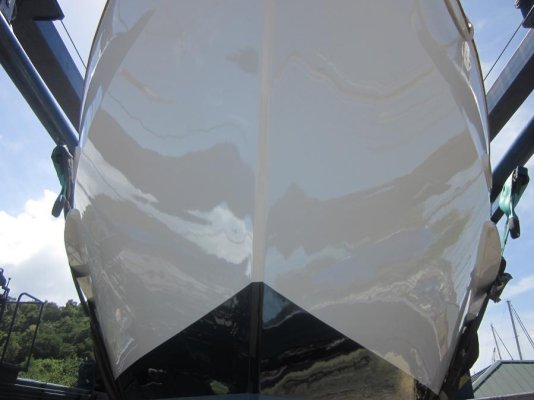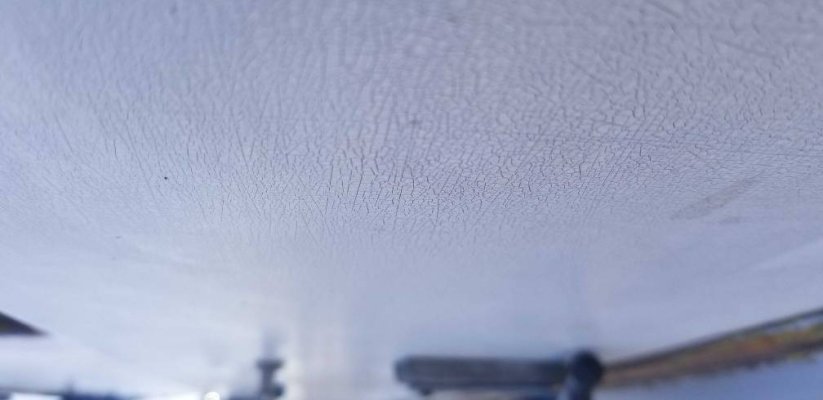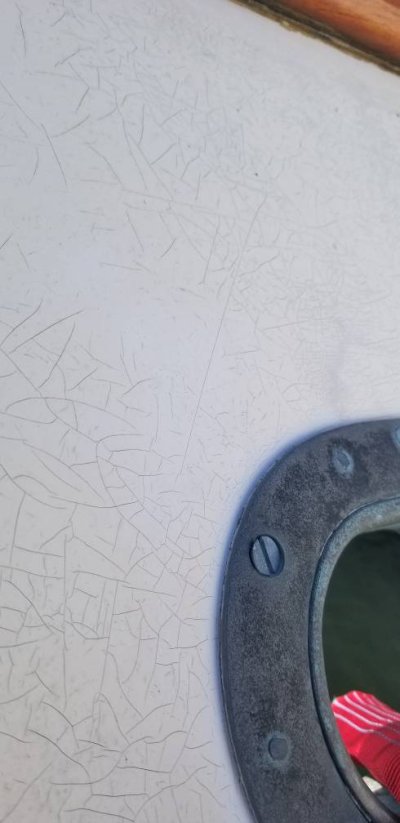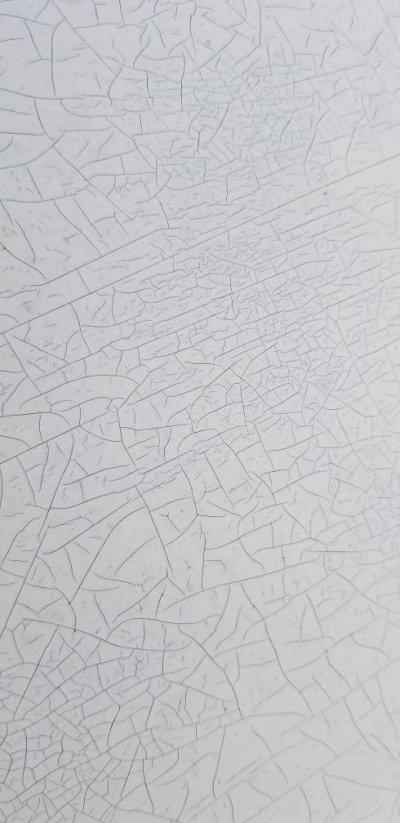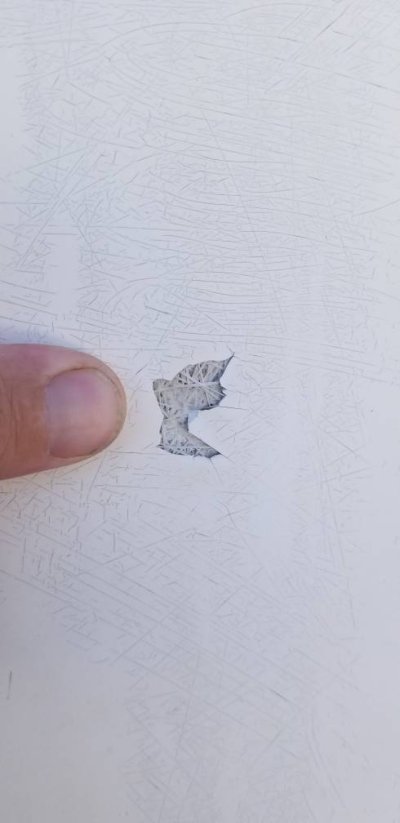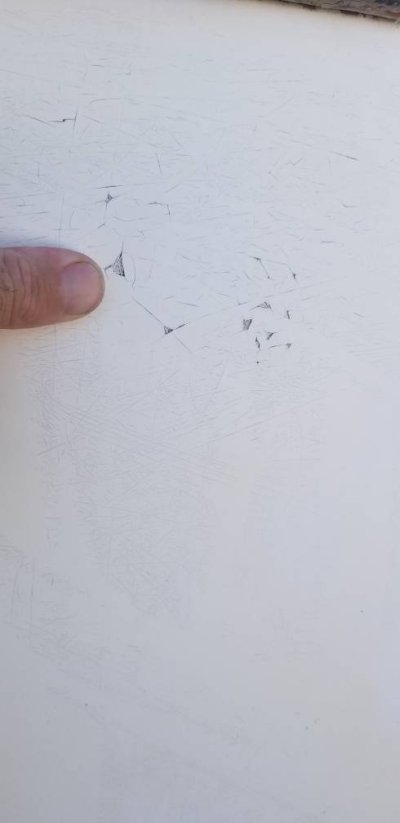TrawlerTribe
Veteran Member
- Joined
- Sep 2, 2019
- Messages
- 36
- Location
- USA
- Vessel Name
- Gratitude
- Vessel Make
- 1982- 44ft Island Gypsy Trawler
Trying to put together a plan to improve our topsides. It's an old boat with crazed gelcoat throughout. They are not caused from stress cracks and are all over the topsides. The boat has been painted previously and the paint is in rough shape. Thinking about learning to AwlGrip.
Can I sand, prime, and Awlgrip or do i need to Fair the entire topside to cover the crazing?
Wondering if the Awlgrip Primer will fill in the crazing and for how long or will it eventually bleed through the paint and show the cracks?
I have sanded a few areas through the white paint. There is an off white color underneath which i think is the actual Gelcoat. There are areas where the crazing is worse and they seem to have a white color. Wondering if it is old Fairing compound. If i sand through it it does down to glass mat.
Any advice in dealing with old gelcoat/Awlgrip appreciated.
Here is a pic if the crazing with no sanding and a pic of a section i sanded showing the off white color starting to show after sanding off the white paint.
A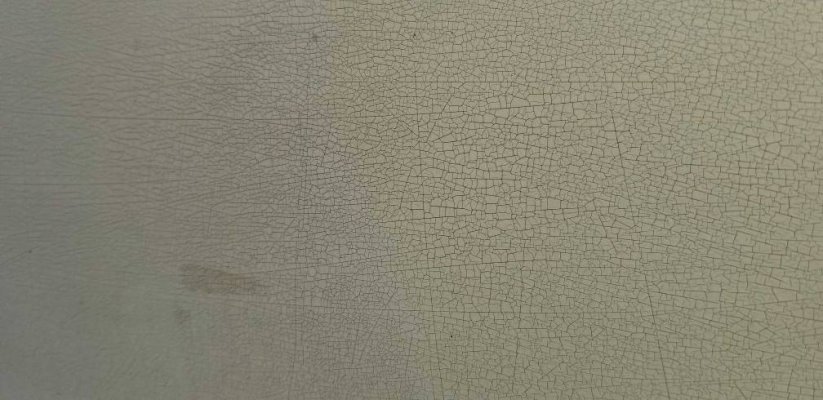
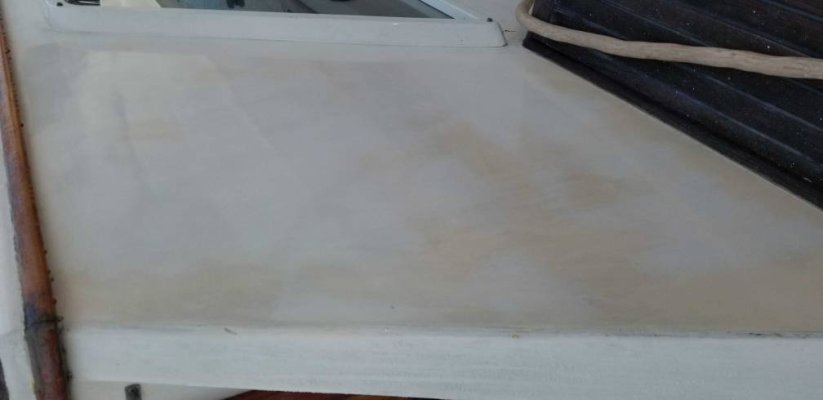
Can I sand, prime, and Awlgrip or do i need to Fair the entire topside to cover the crazing?
Wondering if the Awlgrip Primer will fill in the crazing and for how long or will it eventually bleed through the paint and show the cracks?
I have sanded a few areas through the white paint. There is an off white color underneath which i think is the actual Gelcoat. There are areas where the crazing is worse and they seem to have a white color. Wondering if it is old Fairing compound. If i sand through it it does down to glass mat.
Any advice in dealing with old gelcoat/Awlgrip appreciated.
Here is a pic if the crazing with no sanding and a pic of a section i sanded showing the off white color starting to show after sanding off the white paint.
A



